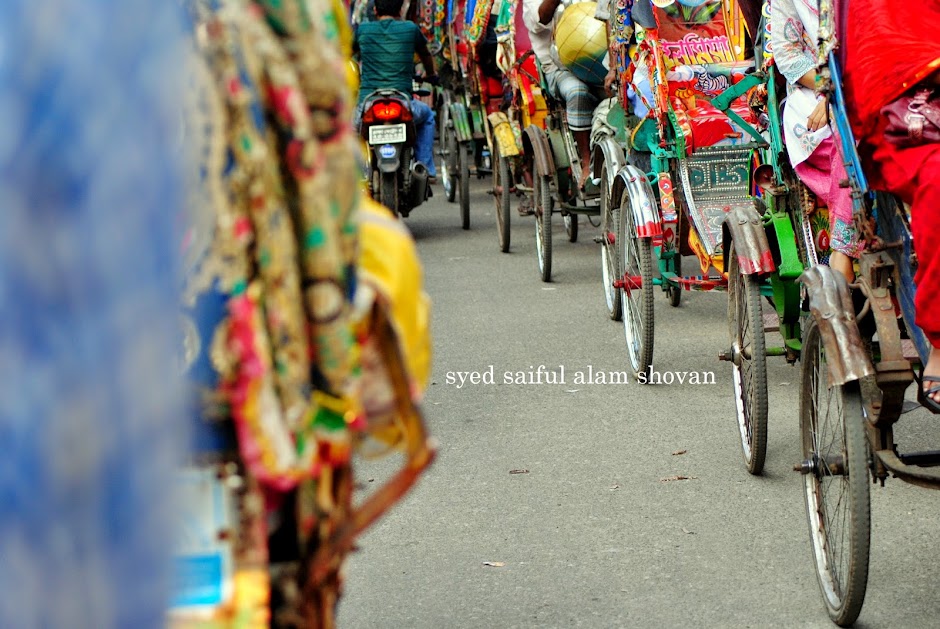Are foot over-bridges really good for a city?
It’s high time to use funds allotted for foot over-bridges - for instance 47 foot over-bridges are to be renovated as part of the Tk319.23-crore project to improve Dhaka’s traffic management - to make more and effective zebra crossings in the country
A few years ago, two photos made the rounds on social media. One showed a young man climbing the stairs of a foot over-bridge in front of a major city hospital carrying an older woman who seemed to be unwell. Another showed a disabled man on a wheelchair at the foot of a foot over-bridge, apparently trying to figure out how to cross the street.
Over the past decades, Dhaka's zebra crossings have been disappearing, replaced by foot over-bridges.
Emphasising foot over-bridges over zebra crossings poses a real problem: it makes movement harder for certain groups of people, for instance, the disabled, people with heart and other medical conditions, pregnant women and so on.
But this foot over-bridge culture has impacts far beyond the crippling of movement for certain people, according to a new generation of urban activists.
"Walking is the most environmentally-friendly transport system. Overdependence on mechanised vehicles pollutes air, makes the cities unlivable by causing huge traffic pressure. On the other hand, a pedestrian takes the least amount of space while going from one place to another. For these various reasons, roads need to be optimised for pedestrians," said Syed Saiful Alam Shovan, an activist and a development professional.
"Foot over-bridges are constructed to give motorised vehicles a priority over the pedestrians," Shovan added.
Foot over-bridges are a rarity in the western world. They rely more on crosswalks.
Even in South Asia, instances of people making sensible use of zebra crossings is not rare, where there are no foot over-bridges.
In Sri Lanka and Bhutan, even school children are seen walking an extra 20 to 25 metres to cross the road over zebra crossings, despite the absence of any physical barriers to force pedestrians to do so.
It is understandable that in a populous country like Bangladesh, enforcing a pedestrian-first policy (that gives priority to pedestrians; when someone indicates intent to cross the street, motorists stop) may not be feasible but it is not hard to control traffic/pedestrian movement using traffic lights, or conventional hand signals of traffic police members.
But in Bangladeshi cities like Dhaka, people are forced to go on foot over-bridges, which most of them despise. The administration, from time to time, runs campaigns where they spot pedestrians not using foot over-bridges, and fine them. They tend to overlook and completely dismiss the reasons behind people disliking foot over bridges.
"People do not like to climb up the stairs to cross the road because it simply takes more physical effort than walking on the plane," explained Shovan.
Overlooking the weaknesses of foot over-bridges, forcing people to use these is considered an educational necessity in Bangladesh, and even mass media joins the shaming campaign by publishing photographs of jaywalkers. There is a significant amount of social media trolling over the subject too.
However, higher walkability is also consistent with ongoing mass transport mega projects such as metro rail and bus rapid transit (BRT), according to zebra-crossing activist Shovan.
"These projects require passengers to come to the stoppage. Unless roads are more pedestrian-friendly, people will not ditch cars for trains, which are comparatively eco-friendly," said the activist.
In a city that is not pedestrian-friendly, it is only normal that authorities, while reconstructing footpaths or road dividers, cut down trees indiscriminately, Shovan stated. When the shades are taken away, the scorching sun further discourages a commuter from walking on foot.
This kind of transport system impacts human lives in ways one cannot imagine.
"I know a family who is planning to conceive a baby only after they are able to buy a car. For them, using Uber on a daily basis is not affordable, and the public transport is not friendly for a pregnant woman," remarked Shovan, in a sad tone.
Foot over-bridges are also costlier than zebra crossings, Shovan pointed out. "Ironically, pedestrian bridges are being built with climate funds, which is not in favour of the most eco-friendly transport, i.e., walking, because people simply do not like to climb up the stairs to cross the streets," he continued.
Due to such policies that give priority to cars instead of walkability, the majority of the population have to face the majority of challenges, the activist opined.
For the cities to be more effective, we need to build them in a "smart" and humane way, the zebra-crossing campaigner stressed. People who do not use the stairs inside a building design foot over-bridges for the city dwellers, he criticised.
Elaborating on this, another urban activist and sustainable lifestyle enthusiast Saba Homaira Ahmad said, "Foot over-bridges are designed by the engineers and foreign consultants with their bird's eye understanding of city planning. They don't account for how a septuagenarian, or a pregnant woman, or a pheriwala with heavy baggage or a differently abled person is supposed to navigate the city."
No, adding an escalator that's out of commission 80% of the time does not count, she added.
"There is heavy funding on constructing hideous foot over-bridges through foreign aid . If there's funding to build these ugly structures, there's funding to teach and enforce the use of simple zebra crossings," concluded Saba.
https://www.tbsnews.net/features/panorama/are-foot-over-bridges-really-good-city-302692


No comments:
Post a Comment